Key takeaways:
- Depth in photography is achieved through composition, light, and emotional storytelling, enhancing the three-dimensionality of images.
- Techniques such as leading lines, layering elements, and incorporating atmospheric conditions significantly contribute to creating depth.
- Composition elements like foreground context, negative space, and viewpoint adjustments can transform images and enhance viewer engagement.
- Using tools like prime lenses with wide apertures, tripods, and strategic focus points helps to isolate subjects and maintain sharp details, adding to the overall depth.
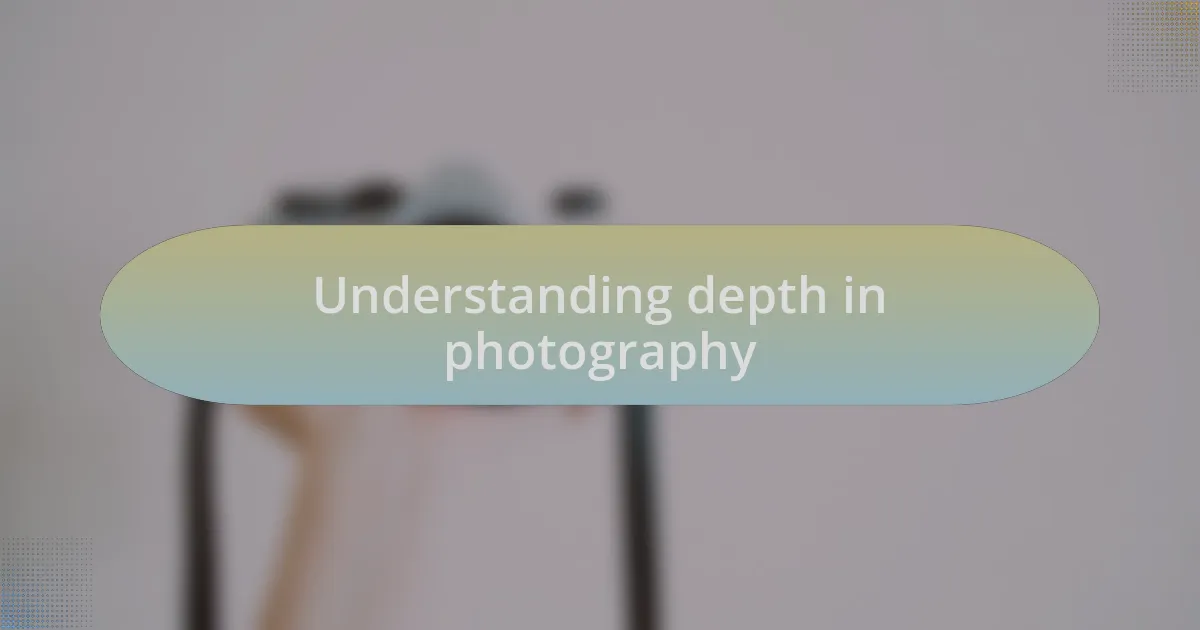
Understanding depth in photography
Depth in photography is about more than just the distance between objects in a scene; it’s about creating a sense of three-dimensionality. I remember the first time I captured a landscape that truly felt alive. It was a chilly morning, and the mist rolled over the hills, layering the scene in a way that drew the viewer’s eye deeper into the frame. It made me realize the power of composition—how elements in the foreground, middle ground, and background can work together to emphasize depth.
Have you ever wondered why some images take your breath away while others seem flat? For me, it often comes down to how light interacts with shapes and textures. One day, while photographing an old barn at sunset, I focused on the weathered wood in the foreground, perfectly framing it against the rich colors of the sky. This attention to detail not only added depth but also evoked nostalgia and warmth—a connection to the past that a flat image could never convey.
Creating depth isn’t just a technical skill; it’s an emotional journey. I often experiment with different focal lengths, and I can tell you that sometimes moving just a few steps can change the entire feel of a shot. For instance, when I got closer to a flower in my garden, the background blurred beautifully, transforming a simple image into a story of whispered secrets and delicate beauty. Exploring this aspect of photography has changed how I perceive the world around me, making every corner an opportunity to invite depth into my art.

Techniques for creating depth
Using leading lines is one of my favorite techniques for creating depth in my images. When I was photographing a winding road snaking through a forest, I noticed how the edges of the road drew the viewer’s eyes into the scene. It felt almost like the path was inviting me to explore further, and that narrative element became a crucial part of the image’s impact. Can you envision how guiding a viewer’s gaze can transform a flat photo into an immersive experience?
I also love playing with layering elements in my compositions. One time, while capturing a bustling street market, I positioned myself with colorful fruits in the foreground, people interacting in the middle ground, and vibrant stalls in the background. This layering created a dynamic and rich scene that made viewers feel like they were right there, part of the vibrant atmosphere. Isn’t it fascinating how effectively arranging elements can immerse someone in your photograph?
Another technique that truly makes a difference is incorporating atmospheric elements like fog or rain. I remember a coastal shoot where an unexpected mist rolled in, shrouding the distant cliffs. This natural phenomenon not only softened the background but also amplified the depth of the image, giving it a mysterious allure. Have you felt how these elements can add layers of emotion to your images, turning a simple landscape into a haunting memory?
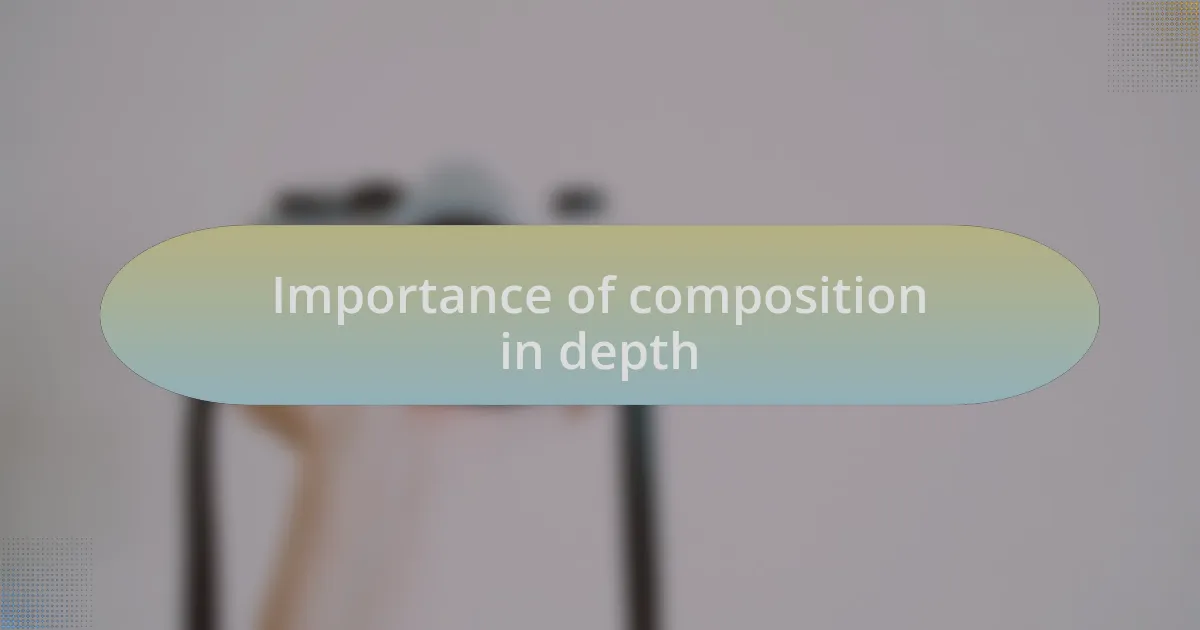
Importance of composition in depth
When I think about composition and its role in creating depth, I often reflect on a sunset I captured over a lake. By placing a silhouetted tree in the foreground, I could not only draw the viewer’s eye into the scene but also add a sense of scale. That simple decision transformed a static image into a story, inviting the viewer to imagine standing there, taking in the moment with me. Have you tried using elements in your foreground to add context in your photographs?
Another aspect I value in composition is the use of negative space. I recall a serene beach scene where I intentionally left a large portion of sky untouched. This space served to highlight the gentle waves lapping at the shore and gave the composition breathing room. It’s intriguing how sometimes, less can be more, right? By allowing space for the viewer’s imagination, I found they felt more connected to the scene.
I’ve also learned that the choice of angle can dramatically affect depth. There was a moment during my travels in the mountains when I shot a winding path from a lower perspective. This low-angle approach made the path seem to stretch infinitely into the distance, enveloped by towering peaks. Can you see how adjusting your viewpoint can add a whole new layer of engagement to your image?
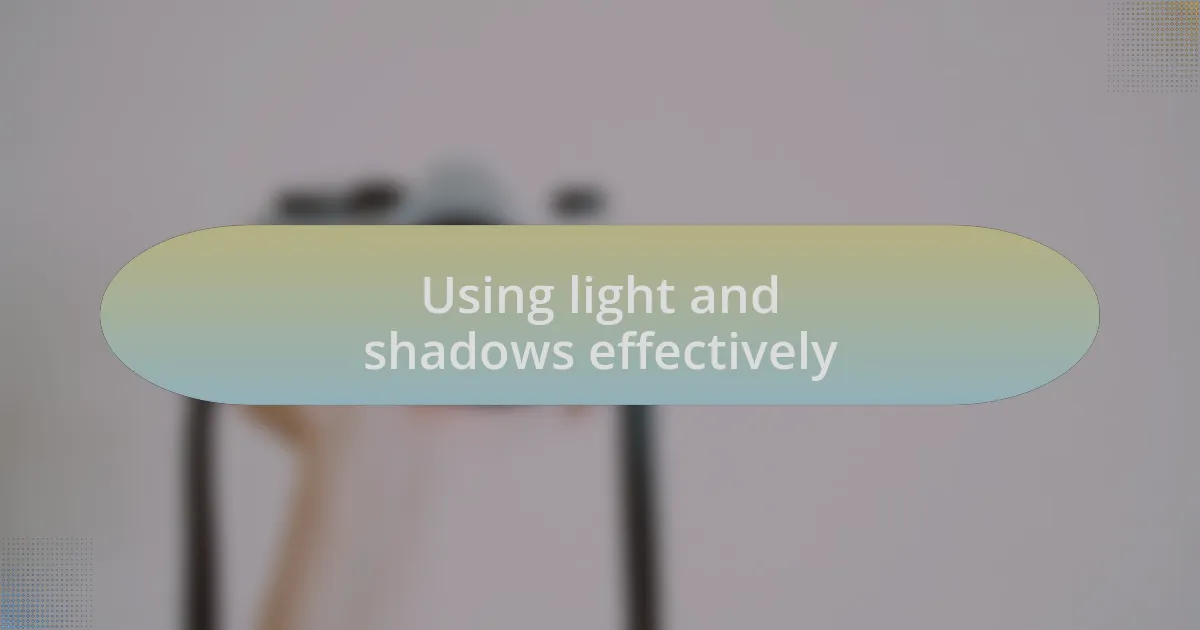
Using light and shadows effectively
Using light and shadows in photography can create a remarkable sense of depth. I remember one evening when I set up my camera in a dimly lit alley, surrounded by tall buildings. The interplay of shadows cast by the setting sun created dramatic shapes on the ground, giving a two-dimensional space an intriguing three-dimensional quality. Have you noticed how a simple shift in lighting can transform a flat scene into something lively and captivating?
In another instance, I experimented with backlighting during a foggy morning shoot. The soft sunlight filtering through the trees not only illuminated the leaves but also added layers of light and shadow that drew the viewer’s eye deeper into the frame. That moment really made me realize how shadows can act as pathways, guiding the viewer’s gaze and adding richness to the overall composition. Have you ever played with backlighting to enhance the mood in your photos?
I’ve found that shadows don’t just obscure—they reveal depth and texture. While photographing a textured wall in an urban environment, the shadows formed by nearby objects highlighted the roughness and character of the surface. This added an unexpected layer of story to the image, inviting the viewer to explore the frame more closely. What stories do your shadows tell in your photographs?
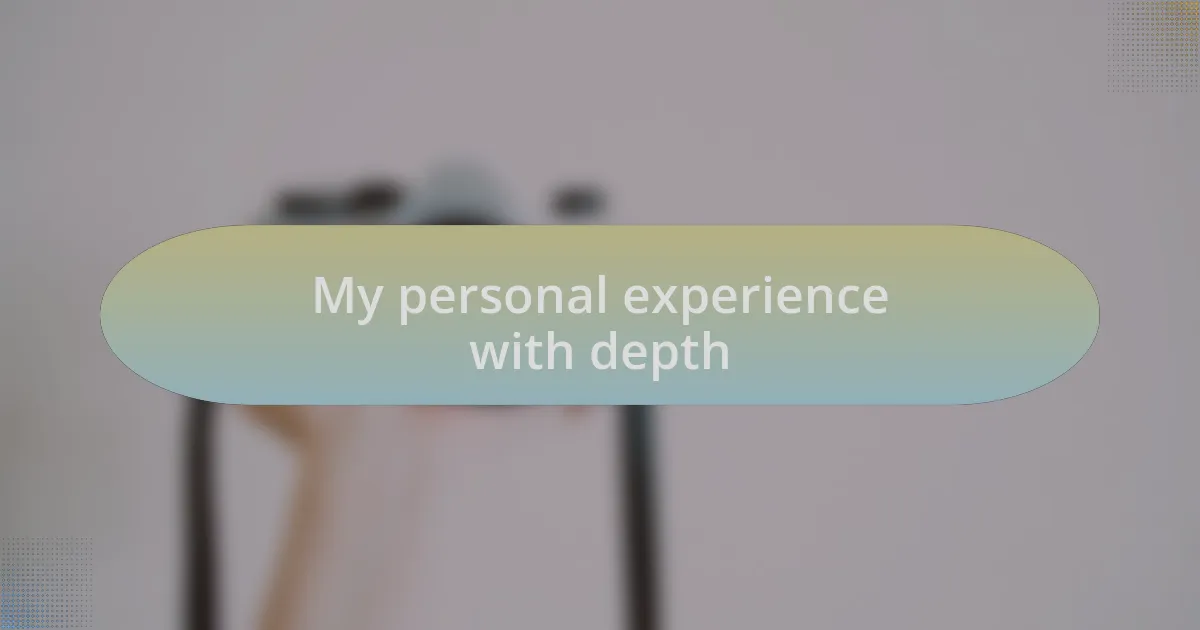
My personal experience with depth
Capturing depth in my images has been a journey of exploration and experimentation. I vividly remember a landscape shoot where I positioned myself low to the ground, shooting through some wildflowers in the foreground. This not only brought those delicate petals into focus but also created a stunning frame that drew the eye to the mountains in the distance. Have you ever considered how changing your perspective can dramatically alter the depth in your photographs?
One time, I was at a bustling market, and I noticed how layering elements in my frame added to the storytelling. I took a shot that included a vendor, their colorful produce, and customers in the background. This layering created a rich tapestry of activity and context, inviting viewers to linger over the details. It made me realize how each layer added depth—not just to the image but also to the narrative it conveyed. Do you often think about the story behind what you’re capturing?
I recall experimenting with a long exposure at twilight, with city lights glittering like stars against the darkening sky. This technique allowed me to capture movement in the foreground while maintaining a crisp background. The depth created by the soft blurs in the foreground contrasted beautifully with the sharp details of the skyline, evoking a sense of dynamism and drama. Have you tried long exposures to enhance the textures and depth in your own photography?
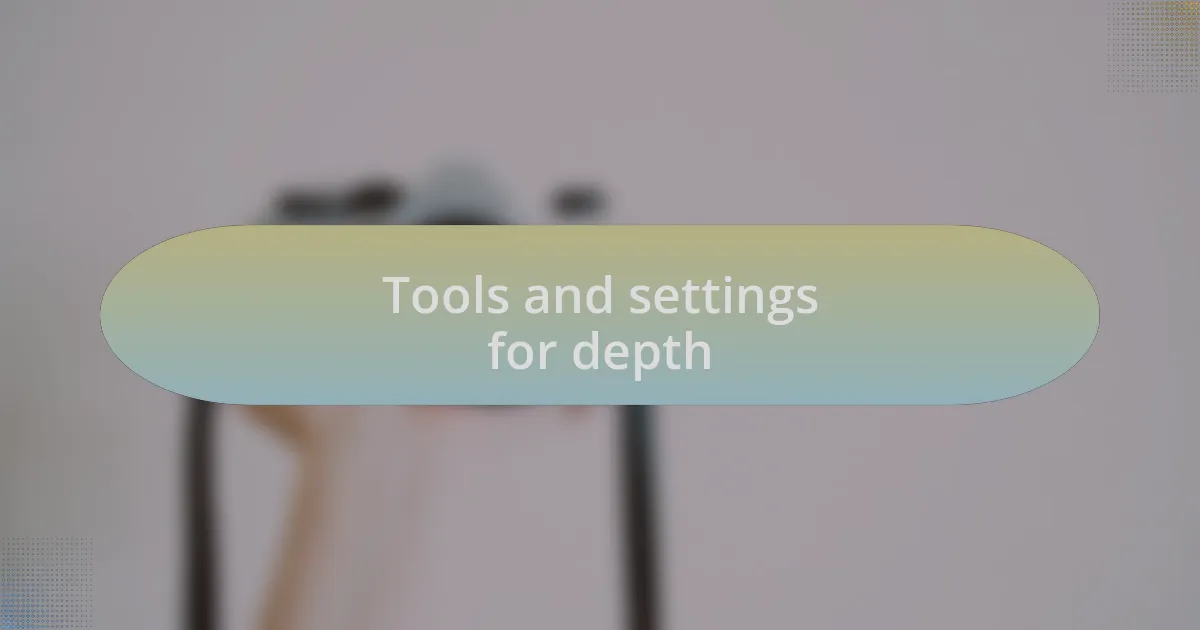
Tools and settings for depth
When it comes to tools for adding depth, my favorite lens is a prime lens with a wide aperture, like an f/1.8 or f/1.4. This allows me to create a narrow depth of field, which beautifully blurs the background while keeping my subject in sharp focus. Have you ever noticed how isolating your subject can create a pronounced sense of depth? It’s like drawing a clear line between what’s important in the frame and what isn’t.
In just about every shoot, I also rely on using a tripod. This trusty tool helps me achieve sharpness, especially in low-light conditions or when I experiment with longer exposures. Once, during a sunrise shoot in the mountains, my tripod allowed me to maintain stability while capturing the soft gradients of light reflecting off the rocks below. Can you imagine the depth in the image when every detail of the scene is crisp, inviting the viewer to step right into it?
Another key setting I frequently adjust is the focus point. I prefer to place it off-center, drawing attention to specific elements within the scene. I remember focusing on a single blossoming flower while the garden’s vibrant foliage blurred into the background. This simple adjustment transformed a commonplace view into a layered experience. What about you? Do you consider the positioning of your focus point when capturing an image?